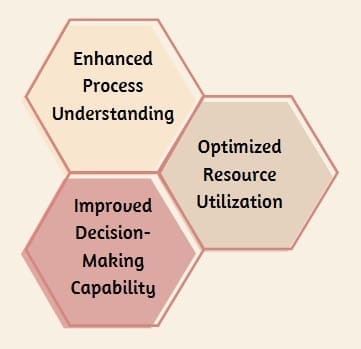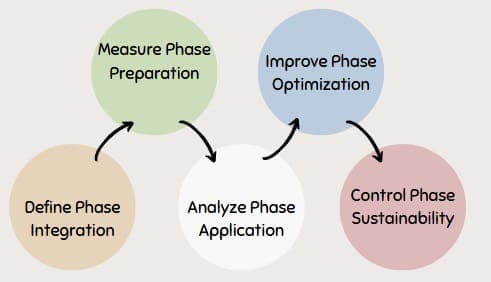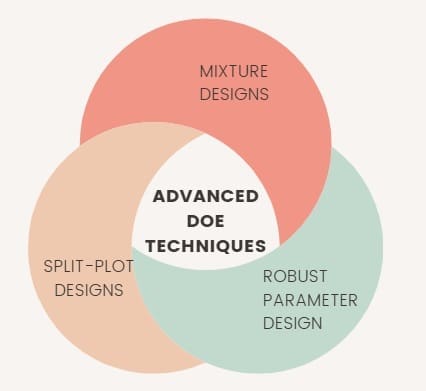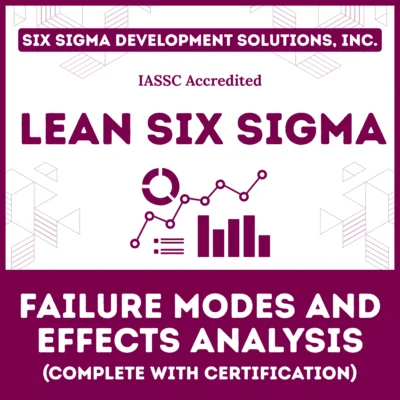Design of Experiments (DOE) serves as a cornerstone methodology within Six Sigma projects, enabling organizations to optimize processes systematically while reducing variation and improving quality. This powerful statistical technique transforms how businesses approach problem-solving by providing structured approaches to identify critical factors affecting process performance.
Six Sigma practitioners leverage DOE to move beyond traditional trial-and-error methods, instead employing scientific approaches that deliver measurable results. Organizations implementing DOE within their Six Sigma framework consistently achieve breakthrough improvements in quality, cost reduction, and customer satisfaction.
Table of contents
Understanding Design of Experiments in Six Sigma Context
Design of Experiments represents a systematic method for planning, conducting, and analyzing controlled tests to evaluate factors that control process outputs. Within Six Sigma methodology, DOE functions as a critical tool during the Improve phase of DMAIC (Define, Measure, Analyze, Improve, Control).
The integration of DOE into Six Sigma projects enables teams to identify optimal operating conditions while minimizing resources and time investment. Furthermore, this approach provides statistical confidence in results, ensuring that improvements are both significant and sustainable.
Six Sigma teams utilize DOE to understand cause-and-effect relationships between input variables (factors) and output responses (critical-to-quality characteristics). This understanding becomes essential for achieving breakthrough performance improvements that traditional problem-solving methods cannot deliver.
Public, Onsite, Virtual, and Online Six Sigma Certification Training!
- We are accredited by the IASSC.
- Live Public Training at 52 Sites.
- Live Virtual Training.
- Onsite Training (at your organization).
- Interactive Online (self-paced) training,
Core Benefits of Implementing DOE in Six Sigma Projects

Enhanced Process Understanding
DOE provides Six Sigma teams with deep insights into process behavior by revealing how different factors interact to influence outcomes. This comprehensive understanding enables practitioners to identify root causes of variation and develop targeted solutions.
Teams gain clarity about which factors significantly impact process performance, allowing them to focus improvement efforts on high-impact variables rather than pursuing ineffective changes. Consequently, organizations achieve faster results with reduced resource consumption.
Optimized Resource Utilization
Traditional improvement approaches often require extensive experimentation with uncertain outcomes. However, DOE enables Six Sigma practitioners to extract maximum information from minimum experimental runs, significantly reducing time and cost investments.
The structured approach of DOE ensures that experiments generate statistically valid conclusions while minimizing disruption to ongoing operations. This efficiency becomes particularly valuable in manufacturing environments where downtime carries substantial costs.
Improved Decision-Making Capability
DOE provides quantitative data that supports evidence-based decision-making throughout Six Sigma projects. Teams can confidently identify optimal settings for process parameters based on statistical analysis rather than intuition or experience alone.
This data-driven approach reduces risk associated with process changes while increasing the likelihood of achieving desired improvements. Additionally, the statistical foundation enables teams to predict process performance under different operating conditions.
Essential Design of Experiments Types

Full Factorial Designs
Full factorial designs examine all possible combinations of factor levels, providing complete information about main effects and interactions. Six Sigma teams often employ these designs when investigating a limited number of factors with high precision requirements.
These designs offer maximum information but require more experimental runs compared to fractional factorial approaches. Therefore, teams typically reserve full factorial designs for critical processes where comprehensive understanding justifies the additional investment.
Fractional Factorial Designs
Fractional factorial designs enable Six Sigma practitioners to screen multiple factors efficiently by examining a carefully selected subset of all possible factor combinations. This approach proves particularly valuable during early project phases when teams need to identify significant factors from large lists of potential candidates.
The reduced number of experimental runs makes fractional factorial designs practical for resource-constrained environments while still providing adequate information for factor screening. Moreover, these designs can identify main effects and some interactions with statistical confidence.
Response Surface Methodology
Response Surface Methodology (RSM) helps Six Sigma teams optimize processes by modeling relationships between factors and responses using mathematical equations. This advanced DOE approach enables practitioners to identify optimal operating conditions and understand process behavior across factor spaces.
RSM becomes especially powerful when teams need to achieve specific target values or maximize/minimize particular responses. The methodology provides graphical representations that facilitate communication of results to stakeholders and support implementation decisions.
Also Read: A Deep Dive into Design of Experiments (DOE) Engineering
Implementing DOE in DMAIC Methodology

Define Phase Integration
During the Define phase, Six Sigma teams establish the foundation for successful DOE implementation by clearly articulating project objectives and identifying critical-to-quality characteristics. This preparation ensures that subsequent experimental designs align with business requirements and customer needs.
Teams must also define the scope of DOE activities, including resource requirements, timeline constraints, and success criteria. Proper planning during this phase prevents scope creep and ensures efficient project execution.
Measure Phase Preparation
The Measure phase focuses on establishing baseline performance and validating measurement systems before conducting designed experiments. Six Sigma practitioners must ensure that measurement systems demonstrate adequate precision and accuracy to detect meaningful changes in process responses.
Measurement system analysis becomes critical because DOE conclusions depend entirely on data quality. Teams should complete gauge R&R studies and address any measurement issues before proceeding with experimental design activities.
Analyze Phase Application
DOE activities typically commence during the Analyze phase when teams have sufficient process understanding to identify potential factors for investigation. This timing ensures that experimental resources focus on factors with genuine potential for process improvement.
Statistical analysis of DOE results provides insights into factor significance, optimal settings, and interaction effects. Teams use these findings to develop improvement strategies for implementation during the subsequent Improve phase.
Improve Phase Optimization
The Improve phase leverages DOE results to implement process changes that deliver breakthrough performance improvements. Teams use statistical models developed during DOE analysis to predict process behavior and optimize operating conditions.
Implementation planning should include verification experiments to confirm that predicted improvements actually occur in practice. This validation step ensures that theoretical benefits translate into real-world results.
Control Phase Sustainability
During the Control phase, teams establish monitoring systems to maintain process improvements achieved through DOE implementation. Control charts and process monitoring procedures should focus on critical factors identified during experimental activities.
Documentation of optimal factor settings and operating procedures ensures that process improvements remain sustainable over time. Additionally, training programs should transfer DOE knowledge to operations personnel responsible for ongoing process management.
Statistical Considerations for Six Sigma Design of Experiments
Sample Size Determination
Proper sample size calculation ensures that DOE activities generate statistically significant results while minimizing experimental costs. Six Sigma practitioners must balance statistical power requirements with practical constraints such as time, cost, and resource availability.
Power analysis helps teams determine minimum sample sizes needed to detect meaningful differences in process responses. This calculation prevents situations where experiments fail to identify significant effects due to inadequate sample sizes.
Randomization and Blocking
Randomization reduces the impact of uncontrolled variables on experimental results by ensuring that systematic biases do not influence conclusions. Six Sigma teams should randomize both the order of experimental runs and the assignment of factor levels to experimental units.
Blocking strategies help control known sources of variation that cannot be randomized, such as different shifts, operators, or equipment. Proper blocking increases experimental precision by reducing background noise that might obscure factor effects.
Analysis of Variance (ANOVA)
ANOVA provides the statistical framework for analyzing DOE results and determining which factors significantly influence process responses. Six Sigma practitioners use ANOVA to separate total variation into components attributable to different factors and interactions.
The technique enables teams to quantify the relative importance of different factors and identify opportunities for process improvement. Additionally, ANOVA results support development of predictive models for process optimization.
Also Read: Computer-Aided Design (CAD)
Common DOE Challenges and Solutions in Six Sigma
Resource Constraints
Limited availability of time, personnel, or materials can restrict DOE implementation in Six Sigma projects. Teams should prioritize factors for investigation based on their potential impact and feasibility of experimentation.
Sequential experimentation strategies allow teams to conduct DOE activities in phases, starting with screening experiments to identify significant factors before proceeding to optimization studies. This approach maximizes information gained while working within resource constraints.
Process Variability
High levels of background variation can mask factor effects and reduce experimental precision. Six Sigma teams should implement process standardization and control measures before conducting designed experiments.
Noise reduction strategies, including operator training, equipment maintenance, and raw material standardization, improve experimental sensitivity and increase the likelihood of detecting significant factor effects.
Stakeholder Buy-in
Successful DOE implementation requires support from process owners, operators, and management throughout the organization. Six Sigma practitioners should communicate the benefits of DOE and involve stakeholders in experimental planning activities.
Training programs help build organizational capability for DOE implementation while demonstrating the value of structured experimentation approaches. Clear communication of results and benefits ensures continued support for future DOE activities.
Advanced DOE Techniques for Six Sigma Excellence

Mixture Designs
Mixture designs address situations where factors represent components of a mixture that must sum to a constant total. These specialized designs prove valuable in chemical processes, food manufacturing, and other applications where ingredient proportions affect product quality.
Six Sigma teams use mixture designs to optimize formulations while maintaining cost constraints and quality requirements. The technique enables simultaneous consideration of multiple objectives through appropriate response modeling.
Robust Parameter Design
Robust parameter design focuses on identifying factor settings that minimize sensitivity to noise factors beyond organizational control. This approach helps Six Sigma teams develop processes that maintain consistent performance despite variation in environmental conditions or raw materials.
The methodology distinguishes between control factors (which organizations can set) and noise factors (which vary unpredictably). Optimization focuses on control factor settings that minimize the impact of noise factor variation.
Split-Plot Designs
Split-plot designs accommodate situations where some factors are difficult or expensive to change during experimentation. These designs prove particularly valuable in manufacturing environments where certain factors require significant setup time or cost.
The approach enables efficient experimentation by grouping factors based on their ease of manipulation, reducing overall experimental costs while maintaining statistical validity.
Also Read: Computer-Aided Design (CAD)
Technology Tools Supporting DOE in Six Sigma
Statistical Software Packages
Modern statistical software packages provide comprehensive DOE capabilities that support Six Sigma practitioners throughout the experimental process. These tools offer design generation, data analysis, and results interpretation features that enhance experimental efficiency.
Popular software options include Minitab, JMP, Design-Expert, and R, each offering unique strengths for different types of DOE applications. Teams should select software based on their specific requirements, user experience levels, and organizational standards.
Data Collection Systems
Automated data collection systems reduce experimental errors while improving data quality and reducing labor requirements. Six Sigma teams should leverage available technology to streamline data gathering and minimize manual transcription errors.
Integration between data collection systems and statistical analysis software enables real-time monitoring of experimental progress and rapid identification of data quality issues.
Measuring DOE Success in Six Sigma Projects
Key Performance Indicators
Successful DOE implementation should deliver measurable improvements in process performance metrics such as defect rates, cycle times, yield, and cost per unit. Six Sigma teams should establish baseline measurements and track improvements throughout project execution.
Financial benefits provide compelling evidence of DOE value, including cost savings from reduced waste, improved productivity, and enhanced customer satisfaction. Documentation of these benefits supports future DOE investments and organizational learning.
Long-term Sustainability Metrics
Sustainable improvements require ongoing monitoring and control to prevent process degradation over time. Teams should establish control systems that maintain optimal factor settings identified through DOE activities.
Process capability improvements, measured through Cp and Cpk indices, demonstrate the lasting impact of DOE implementation on process performance. These metrics provide objective evidence of Six Sigma project success.
Final Words
Design of Experiments (DOE) is a powerful statistical methodology that enables businesses, researchers, and engineers to make data-driven decisions and optimize processes efficiently.
By systematically planning, conducting, and analyzing controlled tests, DOE helps identify key factors, reduce variability, and improve overall performance. Whether you’re working in manufacturing, healthcare, marketing, or product development, implementing DOE can lead to significant improvements in quality, cost-efficiency, and innovation.
Mastering the principles of Design of Experiments is essential for anyone looking to achieve reliable results and drive continuous improvement in today’s competitive environment.
Frequently Asked Questions
Q: What is the primary purpose of DOE in Six Sigma projects?
DOE serves to systematically identify optimal process conditions while understanding cause-and-effect relationships between input factors and output responses, enabling breakthrough improvements with statistical confidence.
Q: When should Six Sigma teams implement DOE during DMAIC phases?
Teams typically begin DOE activities during the Analyze phase after establishing process baselines and understanding current performance, then use results during the Improve phase for optimization.
Q: How many factors can be effectively studied using DOE in Six Sigma?
The number depends on experimental resources and design type, but screening designs can efficiently evaluate 5-15 factors, while optimization studies typically focus on 2-5 critical factors.
Q: What statistical knowledge is required for successful DOE implementation?
Six Sigma practitioners need understanding of basic statistics, ANOVA, hypothesis testing, and statistical software operation, typically covered in Green Belt or Black Belt training programs.
Q: How does DOE differ from traditional trial-and-error improvement methods?
DOE provides structured, statistical approaches that maximize information from minimum experiments, while trial-and-error methods often require more resources with less reliable conclusions.
Q: What are common obstacles to DOE success in Six Sigma projects?
Common challenges include inadequate planning, insufficient resources, measurement system problems, high process variation, and lack of stakeholder support throughout the experimental process.
Q: How can organizations measure ROI from DOE implementation in Six Sigma?
ROI measurement should include direct cost savings from process improvements, reduced waste and rework, improved productivity, enhanced customer satisfaction, and reduced future problem-solving efforts.



















